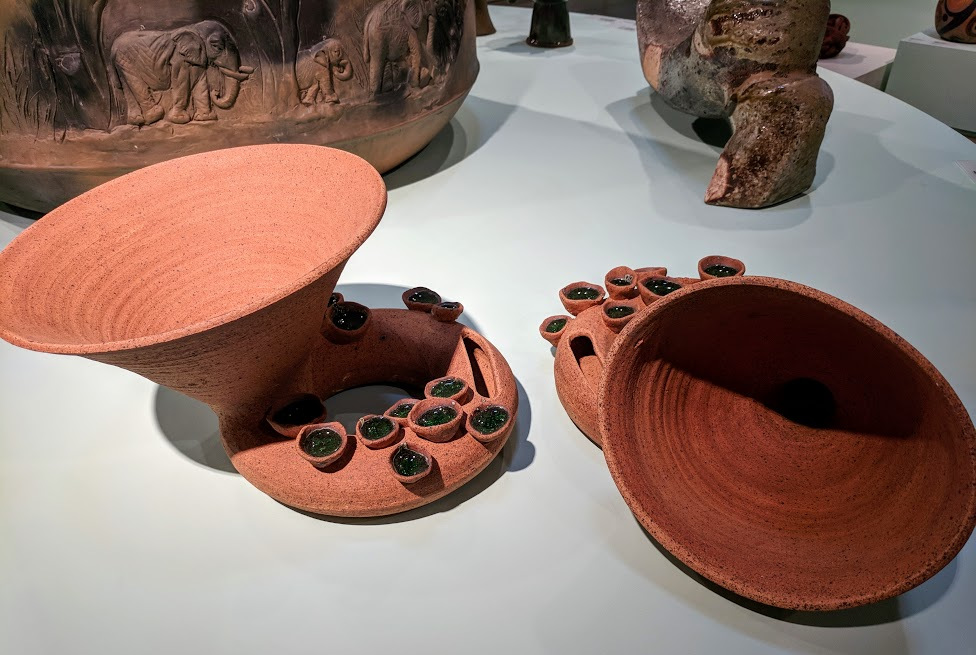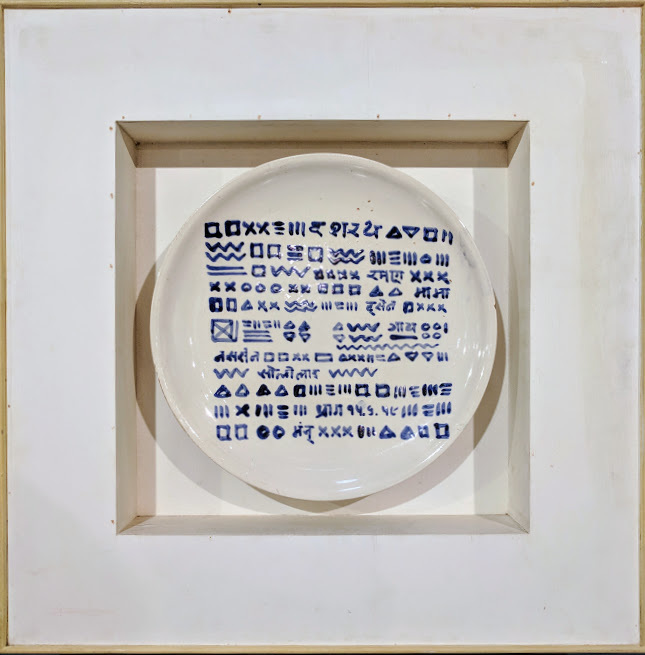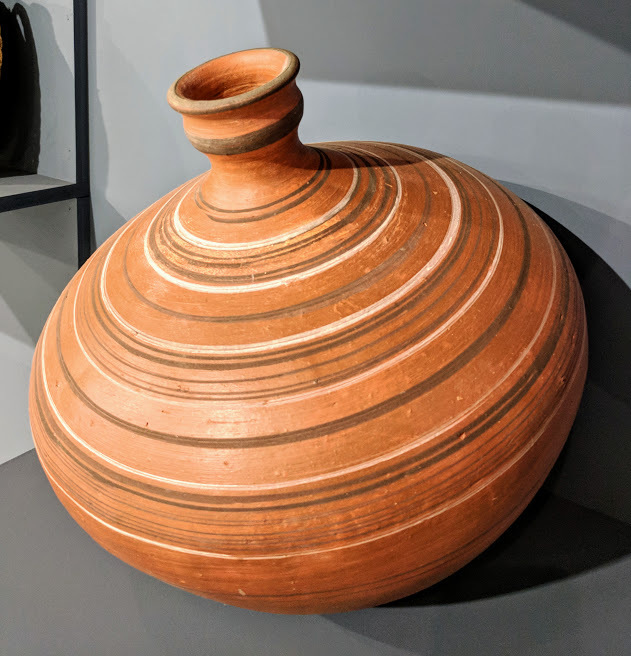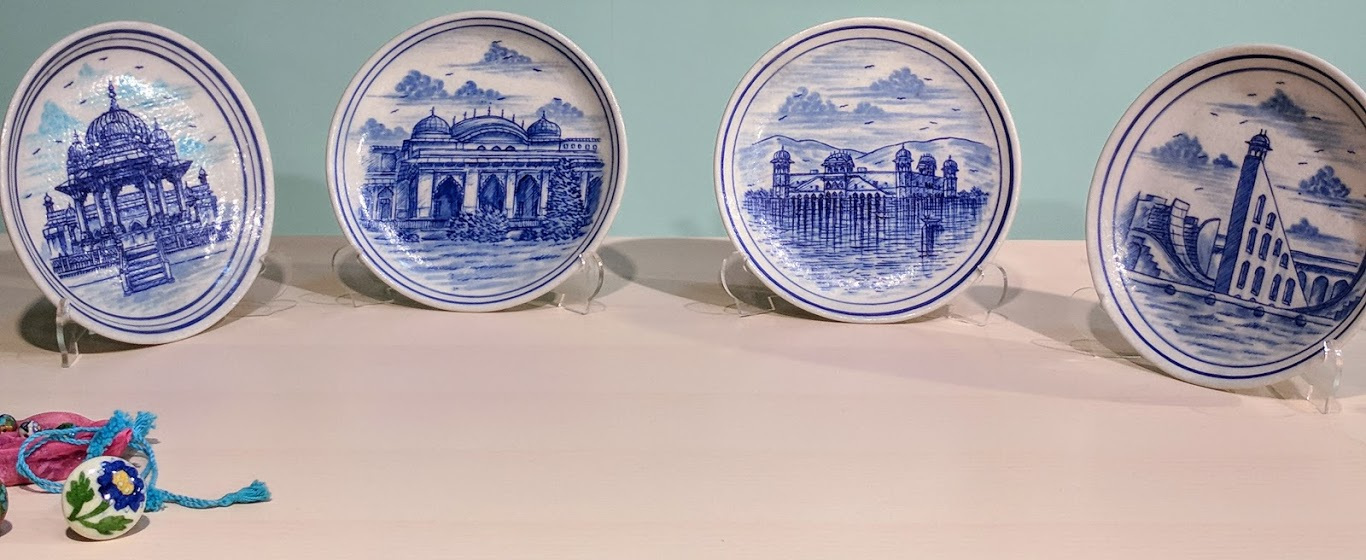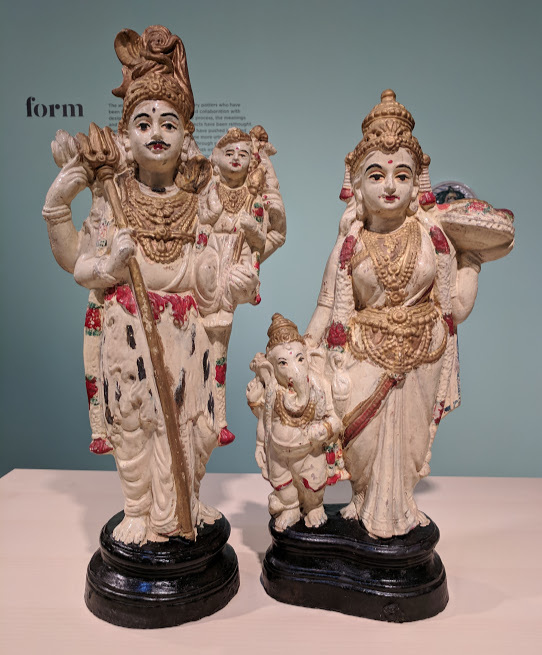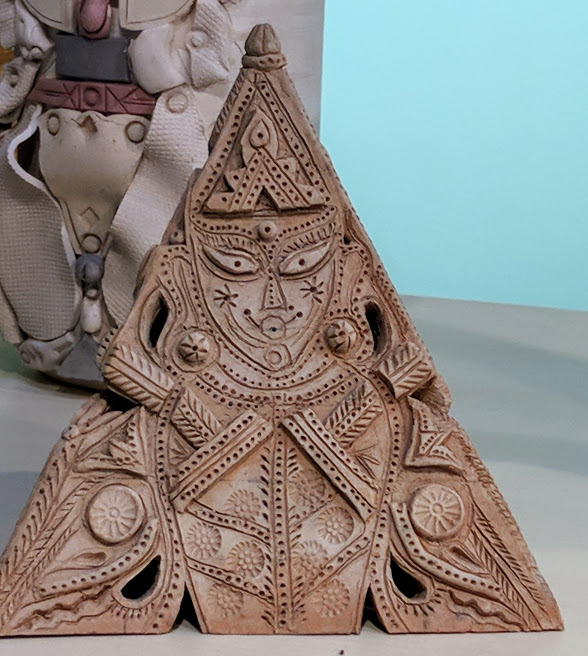“MUTABLE”: THE CHANGING NATURE OF CERAMIC AND CLAY ART IN INDIA
I love experiences that challenge me, make me think and occasionally shake me up a bit — not too much, mind you, just a little. Be it a book, travel, a music performance, food… the memories that have stayed with me are the ones that offered something extra by way of perception. The exhibition on “Mutable: Ceramic and Clay Art in India since 1947“ at the Piramal Museum of Art in Mumbai was one such experience. Curated by Sindhura D.M. and Annapurna Garimella, Mutable showcases 70 years of ceramic and clay art objects sourced from artists, artisans, institutions and private collectors from across India.
I wasn’t aware of this exhibition till photos of its preview night on October 13, 2017, exploded on all my social media timelines. Friends who knew of my interest in all things art tagged me and I went dizzy just keeping up. In the days that followed, tantalising articles and write-ups in newspapers followed, tempting me to drop everything and visit the exhibition, but as it happened it took me 10 days before I could actually do so.
It was my first visit to the Piramal Museum of Art and when I walked in on that October afternoon, I didn’t know where to look first — the large open exhibition space or the exhibits. Exhibition spaces fascinate me in how they are designed to interact with the exhibits within and also how their very design enhances or limits viewer experience. In this case the large open gallery, a viewing gallery on the first floor, a domed roof and the exhibits promised a great experience.
And I wasn’t wrong.
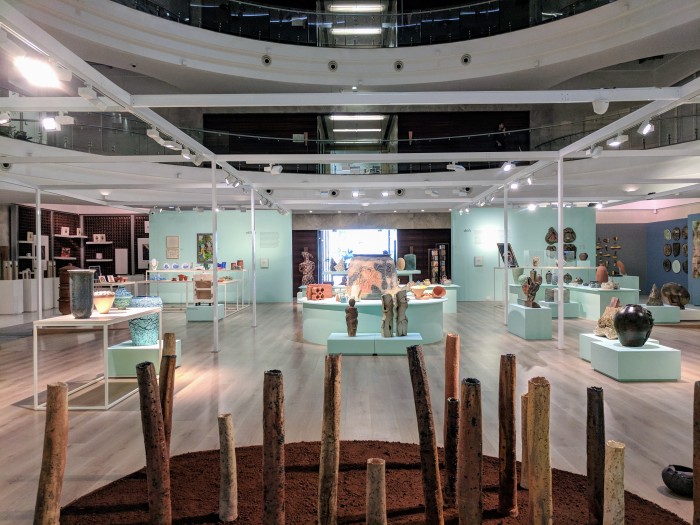
I wasn’t sure what the word “Mutable” meant and had to look it up in the dictionary. According to the Merriam-Webster Dictionary, it means ‘prone to change’ and in the context of the exhibition it means the changes that have taken place in ceramic and clay art in India over the last 70 years.
The Mutable exhibition maps this through 5 sections — Shift, Utility, Form, Object and Perception — with each section addressing “diverse practices, and showcases the works of potters, ceramicists and artists” during the creation of a modern and decolonising India. The exhibition also looks at the works made outside “any specific ideological and institutional frame”, and also objects that were created “through collaborations between potters and artists, artists and industry, studio practitioners and hereditary potters, and between organisations and potters”. In brief, the exhibition sought “to record the… history of the art form and its makers and to explore the boundaries that exist between the ‘traditional’ and ‘contemporary’”.
I took my time to go through the exhibition, and then going back to see the ones I liked, taking my time to understand make the connections between the exhibits and the word “Mutable”. For example, one of the first exhibits I saw was a surahi or a traditional water pot and placed next to it were two modern interpretations of the surahi. Though they looked quite different, they were still recognisable as a surahi. So, while the design had become mutable, its functionality had not.
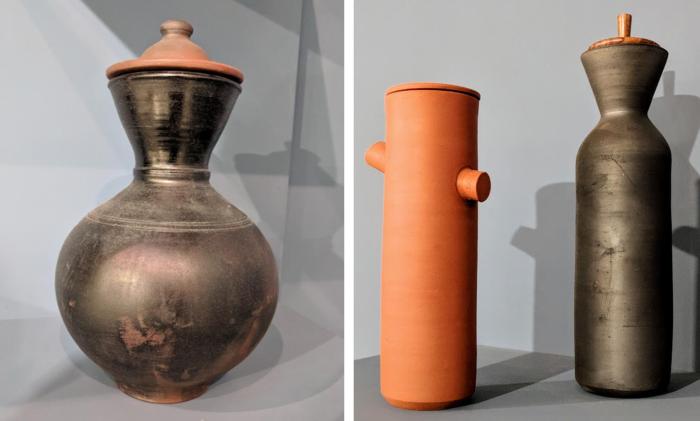
My favourite exhibit was Sudhir Patwardhan’s “Untitled” terracotta work, which at first glance looked like a big slab of pink sandstone. As I looked closer, it revealed surprising details — a tree, and beyond that an undulating landscape. Were undulations mountains or sand dunes? Did the two distinct portions convey a meeting of the traditional and the contemporary? Did this convey the mutable, ever-changing nature of the earth? The terracotta was so compelling that my hands reached out to touch the terracotta slab involuntarily. The ever-watchful security guard cleared his throat loudly and I withdrew my hand guiltily.

Untitled by Sudhir Patwardhan. Terracotta. 1988
There were surp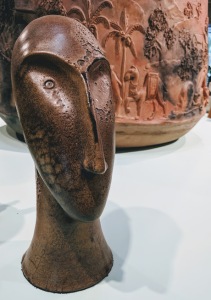 rises and discoveries to be made at the exhibition ! Like Jaimini Roy’s hand-painted work on terracotta. When I saw the hand-painted work, I immediately recognised it as a Jaimini Roy work, but since I only knew of his paintings I had to check and was surprised to find that it was indeed his ! [PS: I also didn’t know that Sudhir Patwardhan worked with terracotta as I only knew of his paintings.] It was also wonderful and special to see the ceramic sculpture (left) titled “Time” by Rekha Goyal. (Hi Rekha ? ), a batc hmate from my Indian Aesthetics programme at Jnanapravaha
rises and discoveries to be made at the exhibition ! Like Jaimini Roy’s hand-painted work on terracotta. When I saw the hand-painted work, I immediately recognised it as a Jaimini Roy work, but since I only knew of his paintings I had to check and was surprised to find that it was indeed his ! [PS: I also didn’t know that Sudhir Patwardhan worked with terracotta as I only knew of his paintings.] It was also wonderful and special to see the ceramic sculpture (left) titled “Time” by Rekha Goyal. (Hi Rekha ? ), a batc hmate from my Indian Aesthetics programme at Jnanapravaha
The scope, magnitude and importance of the Mutable exhibition revealed itself much like Sudhir Patwardhan’s untitled terracotta — slowly, bit by bit, sometimes bold and clear, sometimes nuanced and subtle, sometimes filling me with nostalgia and sometimes with wonder. I loved some of the exhibits, liked most, while a few left me indifferent and puzzled. A selection of some of the exhibits that I loved/liked are given below.

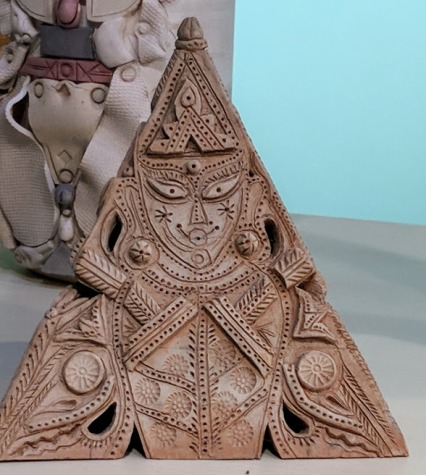
I’m definitely one of those who has taken clay and ceramic art for granted. But this was not always the case. When I started working in 1993 and also started travelling to various places, apart from books, I bought clay and ceramic art — for use at home, as souvenirs, as gifts, etc. My first ceramic piece was a blue and white vase that I got at an exhibition; my first clay art was a terracotta elephant from Chennai. I still have both of them !
When I reached home after visiting the Mutable Exhibition, the first thing I did was to I look around and see the ceramic and clay art at home. Within minutes, I had assembled this little ensemble (you see in the photograph below) together. Though there were more, I didn’t have the patience to gather them together and thought that this was a representative enough. The oldest in this lot is from December 1993 and the newest is from October 2017 and have come various places like Kolkata, Puducherry, Chennai, Delhi, Jaipur, etc.
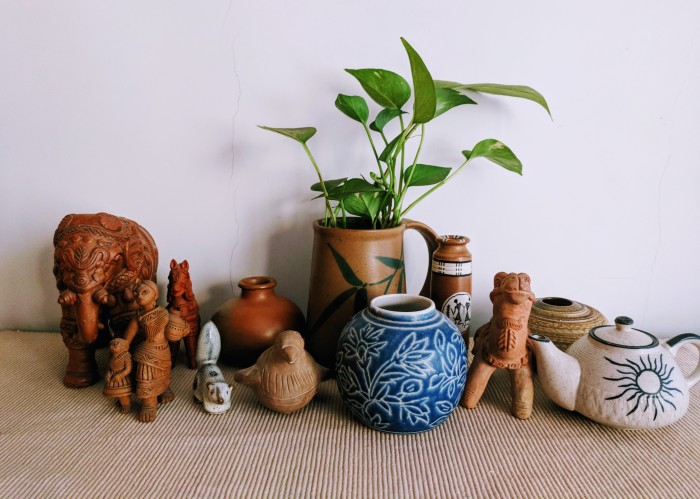
I’m sure there are many like me who have collected and use ceramic and clay art in its various forms. While such people may not and cannot be termed as collectors in the strictest sense —perhaps patron is a better word? — they are important too. For we too have been a part of the changes sweeping through the world of ceramic and clay art in India. And we too have recorded the changes with our little collectibles. Would you agree with me?
As part of the “Mutable” Exhibition, various events and talks were held at the Piramal Museum of Art. While I had the noble intention of attending at least some of them and interact with the artists, and perhaps even visit the exhibition again, that didn’t happen. As the Museum draws to a close next week, I’m just happy that I managed to visit it.
If you are in Mumbai and haven’t visited the exhibition yet, this weekend is your last chance to do so. Please, please don’t miss visiting the Mutable Exhibition. And if you go or have already visited the exhibition, do let me know what you thought of the exhibition.
PS: I received the very timely Marg Magazine on “Indian Ceramics: History and Practice”, yesterday evening, but am yet to read it. Hopefully, it will answer a lot of my questions.


